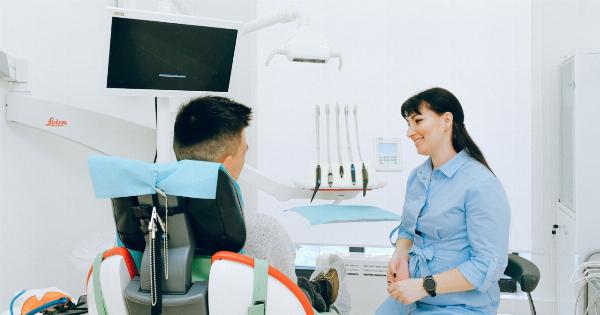When it comes to eyelid surgery, also known as blepharoplasty, many people wonder if it is covered by their insurance. Insurance coverage for this type of surgery can vary depending on several factors.
In this article, we will discuss what you need to know about insurance and eyelid surgery, including coverage options, eligibility, and common reasons for undergoing the procedure.
Understanding Eyelid Surgery
Eyelid surgery is a cosmetic procedure that aims to improve the appearance of the eyelids. It involves removing excess skin, fat, and muscle from the upper and/or lower eyelids.
This surgery can help address issues such as droopy eyelids, puffiness, bags under the eyes, and sagging skin. In addition to its cosmetic benefits, eyelid surgery can also improve vision in cases where excess eyelid skin obstructs the line of sight.
Insurance Coverage for Eyelid Surgery
Insurance coverage for eyelid surgery depends on whether the procedure is considered medically necessary or purely cosmetic. In general, cosmetic procedures are not covered by insurance, as they are perceived as elective or optional.
However, if the surgery is deemed medically necessary, it may be eligible for coverage.
Medically Necessary Eyelid Surgery
Medically necessary eyelid surgery refers to cases where the procedure is required to alleviate functional issues or medical conditions. Some common situations where eyelid surgery may be considered medically necessary include:.
- Obstructed Vision: Excess skin on the upper eyelids can droop over the lashes, obstructing the line of sight and causing visual impairment. In such cases, eyelid surgery may be deemed medically necessary to improve vision.
- Eye Irritation: Excess skin or fat on the lower eyelids can cause constant rubbing against the eye surface, leading to irritation, dryness, and discomfort. If non-surgical interventions fail to relieve these symptoms, insurance may cover eyelid surgery.
- Eyelid Malposition: Conditions like ectropion and entropion, where the eyelids turn inward or outward, respectively, can cause chronic eye dryness, redness, and irritation. Surgery to correct such malpositions may be considered medically necessary.
- Traumatic Eyelid Injury: Eyelid surgery following trauma or injury may be covered by insurance, especially if the injury significantly affects the function or aesthetics of the eyelids.
It’s important to note that insurance coverage policies vary, and it is crucial to consult with your insurance provider to understand their specific guidelines and requirements.
Insurance Eligibility for Eyelid Surgery
In order to determine insurance eligibility for eyelid surgery, certain criteria must be met. These criteria often include:.
- Medical Documentation: Your healthcare provider will need to document and provide evidence of the functional or medical necessity of the eyelid surgery. This may involve performing vision tests, conducting eye examinations, and documenting symptoms.
- Proof of Failed Non-surgical Interventions: Insurance providers typically require evidence that non-surgical treatments, such as lubricating eye drops or other interventions, have been ineffective in addressing the issue.
- Prior Authorization: Some insurance plans may require prior authorization for eyelid surgery. This involves obtaining approval from the insurance provider before undergoing the procedure. Failure to obtain prior authorization may result in denial of coverage.
- Out-of-Pocket Costs: Even if eyelid surgery is deemed medically necessary and covered by insurance, there may still be out-of-pocket costs, such as deductibles, co-pays, or co-insurance. It’s important to review your insurance plan to understand the potential financial implications.
Common Cosmetic Reasons for Eyelid Surgery
While insurance coverage for cosmetic eyelid surgery is rare, many individuals choose to undergo this procedure to address cosmetic concerns. Some common cosmetic reasons for eyelid surgery include:.
- Excess Skin: Aging, sun exposure, and genetic factors can cause the skin on the eyelids to lose elasticity, resulting in sagging and wrinkles. Eyelid surgery can remove the excess skin, creating a more youthful appearance.
- Eye Bag Removal: Puffiness or bags under the eyes can make a person look tired or older than they are. Eyelid surgery can help reduce or eliminate these bags, resulting in a more refreshed look.
- Improved Eye Shape: Some individuals may have naturally occurring asymmetry or irregular eye shapes. Eyelid surgery can help achieve a more balanced and aesthetically pleasing appearance.
- Enhanced Confidence: Eyelid surgery can ultimately boost self-confidence by improving a person’s overall facial aesthetics and reducing signs of aging. While this benefit may not be covered by insurance, it is an essential consideration for many individuals.
Conclusion
Eyelid surgery can provide both functional and cosmetic benefits.
While insurance coverage for this procedure is more likely in cases of medical necessity, such as improving vision or addressing chronic eye irritation, cosmetic reasons for undergoing eyelid surgery may not be covered. It is crucial to consult with your insurance provider to understand their specific coverage policies and eligibility criteria.























